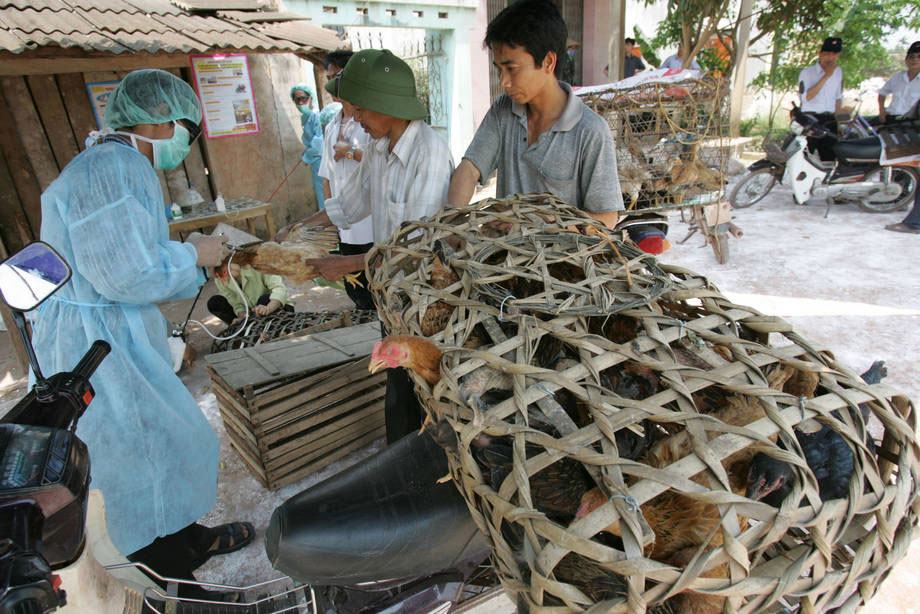Avian flu reappears in Cambodia, UN health agency warns

Cambodian authorities reported two cases of avian flu, including an 11-year-old girl who died of the virus, the UN health agency said on Sunday.
These are the first cases of avian influenza, known as H5N1, reported in Cambodia since a widespread outbreak in 2014, the World Health Organization (WHO) said. The infection, which largely affects animals, has a 50 per cent mortality rate in humans.
The International Health Regulations (2005) set out agreed approaches and obligations for countries to prepare for & respond to disease outbreaks and other acute public health risk https://t.co/FgOh1JXNvXhttps://t.co/QcaT6lszAZ
WHO“The global H5N1 situation is worrying given the wide spread of the virus in birds around the world,” said Sylvie Briand, Director for Epidemic and Pandemic Preparedness and Prevention at the UN health agency. “We are in close communication with the Cambodian authorities to understand more about the outbreak.”
Further cases expected
Since the virus continues to be detected in poultry populations, further human cases can be expected, WHO said. Almost all H5N1 infection cases in people have been associated with close contact with infected live or dead birds or contaminated environments.
“WHO takes the risk from this virus seriously and urged heightened vigilance in all countries,” she said.
From 2003 to 25 February 2023, a total of 873 human cases of H5N1 and 458 deaths have been reported globally in 21 countries.
However, based on the current information, WHO advises against applying any travel or trade restrictions. To date, evidence shows that the virus does not infect humans easily and person-to-person transmission appears to be unusual.
Investigations launched
In Cambodia, a joint animal-human health investigation is already underway in Prey Veng province, where the case was reported. It aims at identifying the source and mode of transmission.
Meanwhile, a high-level government response is working to contain any further spread of the virus, and an outbreak investigation is aimed at determining the exposure of the two reported cases to the virus, WHO said.
Cambodian health authorities had notified WHO on Thursday of the first case and death. A young girl had contracted the avian flu and had died on Wednesday. By Friday, they had reported the second case, noting that one of the girl’s family members had tested positive with the virus but was asymptomatic.

Global response system
Through its Global Influenza Surveillance and Response System, the UN health agency monitors the evolution of the virus and conducts risk assessments. For pandemic preparedness purposes, WHO can also recommend the development of additional new candidate vaccine viruses.
The agency underlined the importance of global surveillance to detect and monitor virological, epidemiological, and clinical changes associated with emerging or circulating viruses that may affect human or animal health.
Currently, there is no vaccine widely available to protect against avian influenza in humans. WHO recommends that all people involved in work with poultry or birds should have a seasonal influenza vaccination to reduce potential risks.
Past outbreaks
Almost a decade ago, the UN Food and Agriculture Organization (FAO) had issued an urgent warning of an outbreak in southeast Asia of a strain of avian influenza called H5N6.
In 2015, FAO again raised alarms about a dangerous outbreak of the highly virulent H5N1 strain, which had spread to five West African countries within six months. The agency had appealed for $20 million in emergency funds “to stop it in its tracks” before it affected humans.
At the time, FAO had said the H5N1 strain has caused the death of tens of millions of poultry and losses of tens of billions of dollars.
Since then, the agency has worked to improve veterinary systems and the capabilities of local laboratories. By 2018, FAO had trained 4,700 veterinarians, who worked to protect farm animals against deadly viruses in 25 countries across Africa, Asia, and the Middle East.
In Cambodia, a 2003 H5N1 outbreak had, for the first time, affected wild birds. Since then, and until 2014, human cases due to poultry-to-human transmission have been sporadically reported in the country.
As of 25 February, Cambodia has reported a total of 58 cases of human infection with the H5N1 virus have been reported since 2003, including 38 deaths.
© UN News (2023) — All Rights Reserved. Original source: UN News
 Global Issues
Global Issues